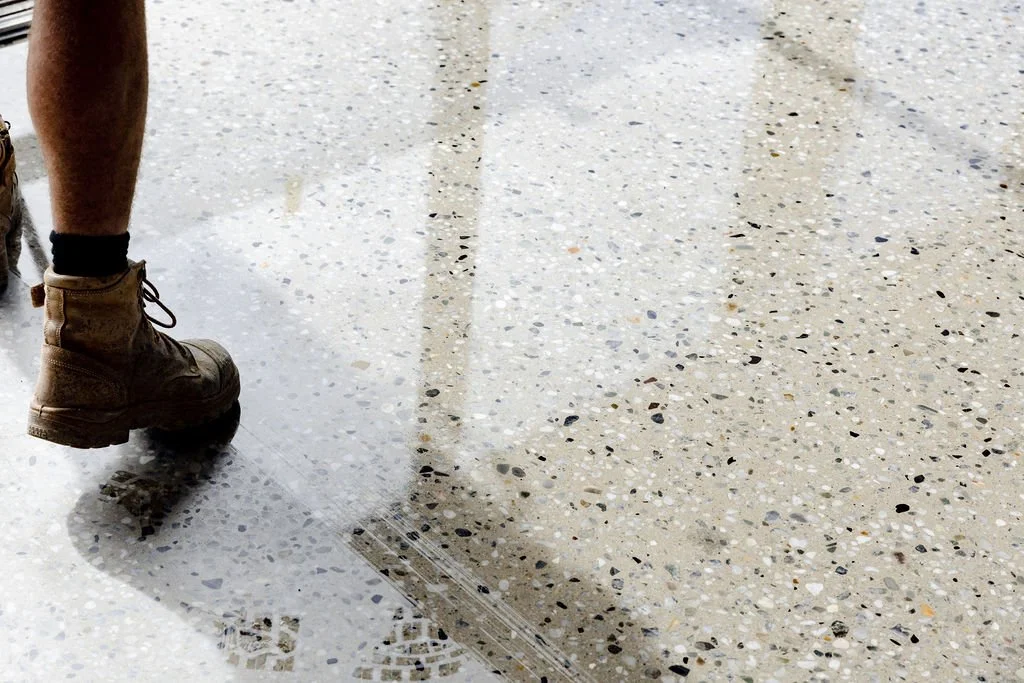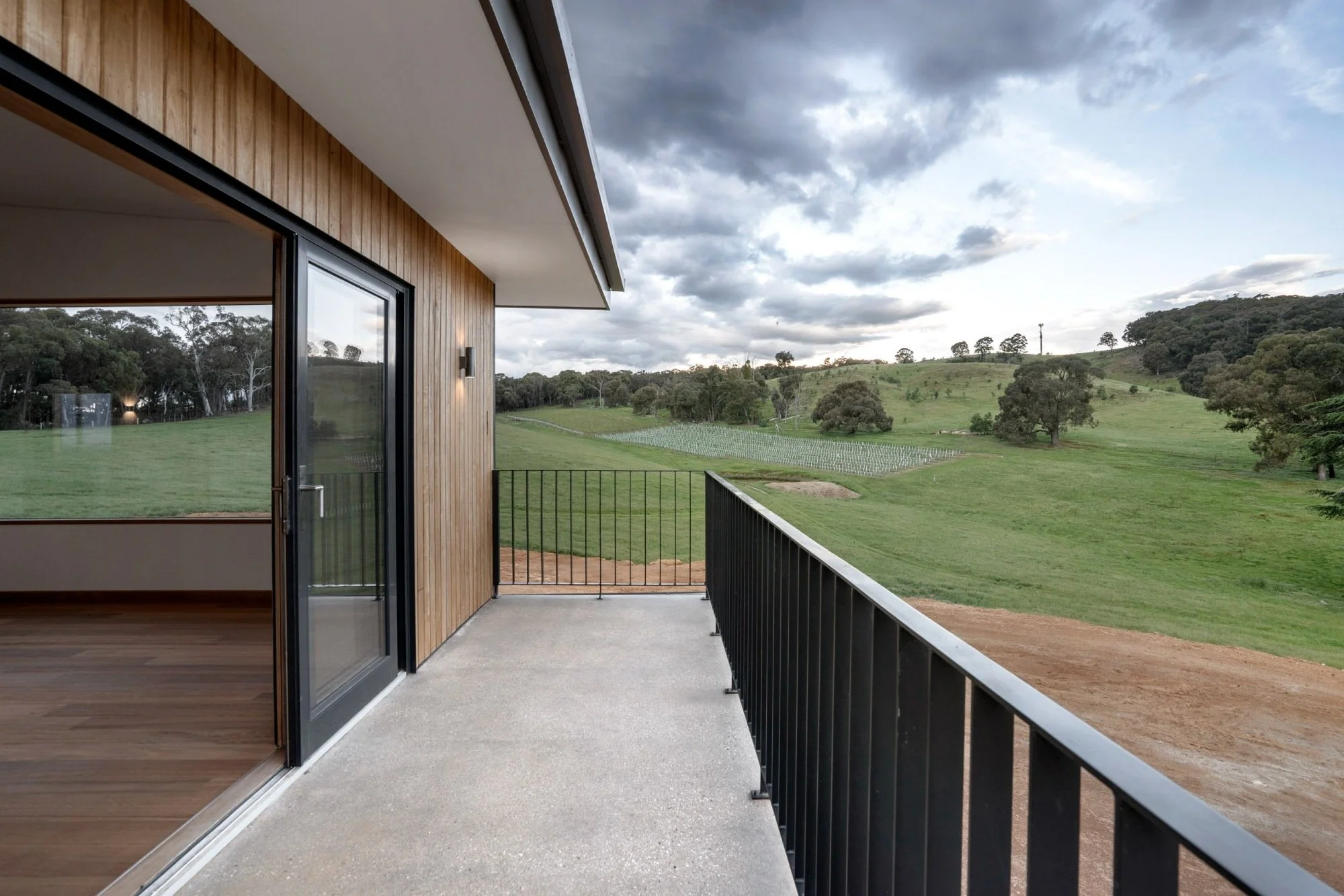Polished concrete is not something to leave to chance. With YDPC, you’re in safe hands.
How do we always create the look you’re after? The final look and feel of a concrete polished floor comes down to the mix within the concrete, the amount of exposure and the final finish. Every floor boasts a unique finish due to the natural nature of the materials.
We’ll put you in contact with the right people to assist you in choosing the right mix for your floor.
If you’re working with an existing concrete floor, we have less control over the types of stones and colouring. Defining the amount of exposure and final finish are ways to refine the look and feel.
Choose your EXPOSURE
The exposure is the amount of stone revealed when grinding back concrete. Depending on your desired look and the use of the space, we can polish your floor in various finishes, from low-sheen to high-gloss.
NIL exposure
This is a polish of the surface only, results rely heavily on the finish provided by the concrete contractor. No two nil-exposure floors are ever the same.
NO grind
Minimum exposure
Approx. 1-2mm grind
This is the result of a light grind This finish has a very dispersed stone effect.
Medium exposure
Approx. 2-4 mm grind
This is the result of a moderate grind. It has a patchier look than the full exposure and a more inconsistent spread of stone.
Full exposure
Approx. 4-5 mm grind
This is the result of a maximum grind. This is a very popular finish with its dense and consistent spread of stone.
Choose your FINISH
We can finish your polished concrete floor depending on your desired look and how you intend to use the space.
Low sheen
Gloss
High gloss
EXTERIOR SOLUTIONS
The perfect polished concrete finish for outdoors.
Grind-etch-and-seal is our recommended finish for outdoor spaces. The concrete is ground back to the desired exposure level and then given a permanent non-slip texture. We also apply two coats of UV-stable clear sealer to enhance the look of the concrete and keep it easy to clean.
POLISHED CONCRETE CARE
Dust mop your concrete floor regularly to remove dirt from its surface.
This is important since particles such as sand, grit, and dirt can be abrasive to your floor and easily ruin its lustre over time. Use a microfibre pad to get even the smallest of dirt particles.
Wipe away spills and stains on your concrete floor immediately.
Leaving them on the surface for too long can ruin the polish and discolour your floor. This is especially true of liquids such as acidic foods, fruit juices, soft drinks, oils and wine.
Don’t use ammonia, bleach, vinegar, hydrochloric acid, or any citrus solution to clean your floor.
You should also avoid applying any cleaning agents that are either acidic or alkaline on the pH scale. These products can damage the surface of your concrete floor. To be on the safe side, only use pH-neutral cleaners.
Avoid placing rubber products on your floor, as they can leave permanent marks.
This includes rubber-backed mats and rubber floor protectors. As an alternative, use felt floor protectors, such as for the ends of furniture legs, to reduce scratches on the surface.
Remember to mop.
The key to maintaining your polished concrete floors is to keep the dust and dirt particles off the floor. Remember to dry mopping regularly and wet mop with a PH-neutral floor cleaner.
FREQUENTLY ASKED QUESTIONS
-
Like most hard surfaces, polished concrete can be slippery when wet. Take care not to leave liquids on the surface to avoid accidents.
-
Polished concrete floors can be cold in the winter months. However, their high thermal mass properties will outperform tiles and most other hard surfaces. Hydronic heating in the slab is a great solution for a warm floor in the colder months.
-
Concrete is prone to cracking due to the nature of the material. Weather, soil conditions, and engineering specifications can all impact how much or little a floor may crack. This will likely only be hairline cracks, which are usually disguised with stone exposure.
-
Depending on the application, polished concrete floors will last over ten years. At that stage, they may require rejuvenation or re-polishing.
-
Yes. Most existing concrete surfaces can be polished. Important factors to consider are the condition of the concrete, as this can determine the exposure levels and colours that will come through.
Other floor coverings, such as tiles, can also impact the colour and pattern of the finished product. A site inspection and sample patch are always recommended before beginning.
-
Over many years, polished concrete will start to lose its lustre. However, they can be rejuvenated to help return the original finish.
-
Planning for your polished concrete floors before your build starts is crucial to getting the best results. This includes selecting your concrete mix, deciding on your exposure level and having your builder, concreter and YDPC all on the same page.
-
No, you will need a concrete supplier. If you don’t have one, we can point you in the right direction towards people we trust.
-
From the pour of the slab, the concrete will need to cure for two to three weeks before we can commence the grinding stage. This is completed before frames. The polishing stage will be completed either just before or just after the plaster goes in.



















